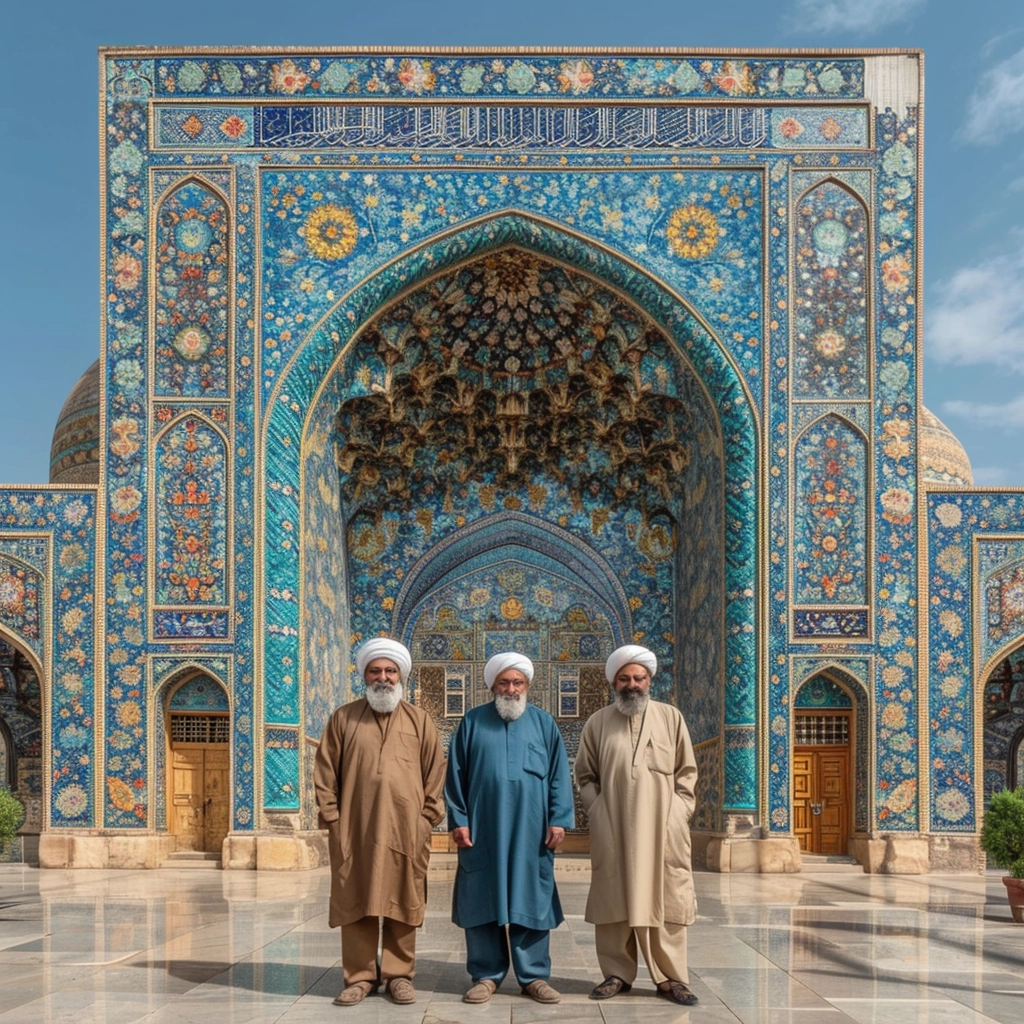In a world accelerated by technology and driven by efficiency, there are pockets of humanity where time seems to stand still, allowing for the continuation of ancient traditions. The story of Kashi tiles and the artisans who meticulously craft them is one such narrative, a testament to the endurance of human creativity against a backdrop of modernity that often casts traditional craftsmanship into obscurity.
Nestled in the heart of Sindh, a province in Pakistan, the legacy of Kashi tiles, also known as Kashi Kari, has withstood the test of time, echoing the whispers of skilled craftsmen who have preserved this form of art for centuries. As the world hurtles towards mass production and uniformity, the significance of these ancient tiles stretches beyond their physical form; they are a symbol of cultural identity and a testament to the artisans’ resilience in the face of industrialization.
A Tradition That Paints the Past
To trace the origins of Kashi Kari is to venture into the annals of human history. The intricate process of creating Kashi tiles has its roots in Mesopotamian civilization, their artful elegance inspired by the region’s natural beauty and the cultural mosaics of civilizations past.
The artisans, known as Kashigiras, hand-craft each tile from clay, molding and glazing them before adorning them with an array of cobalt-blue painted designs that celebrate nature and intricate geometric patterns. It’s a process that has continued down through the generations, an unbroken thread in the fabric of Sindh’s cultural tapestry.
The Struggle to Sustain Heritage
In a touching juxtaposition, Kashi Kari is both a symbol of pride and a reminder of endangered heritage. Despite their cultural importance, the craft and its practitioners face challenges that jeopardize their very existence. With advancements in manufacturing and the rising costs of materials, the slow march of time and progress threatens to fade the vivid colors of this ancient art form.
Heart-rending as it may be, the artisans who devote their lives to Kashi Kari are not idle witnesses to their craft’s decline. Instead, they are guardians, striving to sustain what their forebearers entrusted unto them. The struggle is not merely against economic forces; it’s about ensuring a vital part of humanity’s shared story remains within their communities and beyond.
A Glimmer of Hope Through Community Support
If there is a beacon of hope in these narratives of struggle, it is the growing tide of community support for these artisans and their craft. Non-governmental organizations and cultural institutions in Sindh have begun to recognize the significance of Kashi Kari and are working to provide platforms for its preservation.
Additionally, the thriving global community of patrons who appreciate and seek out these heritage crafts plays a pivotal role in sustaining the livelihood of the Kashigiras. By sharing the stories behind these artworks, and advocating for fair trade practices, consumers around the world contribute directly to supporting these artists and preserving their traditions.
The story of Kashi tiles and the artisans behind them is a poignant one, a tale of historical continuity in the face of relentless change. The lessons they impart transcend the boundaries of Sindh, resonating as universal truths wherever cultural heritage is under threat. It reminds us to pause, to listen, and to support the preservation of crafts that have woven countless stories through the fabric of time.
For those of us who seek to foster a deeper connection with the art around us, there is a profound responsibility to play our part in the continuation of these timeless expressions. By standing in solidarity with the keepers of Kashi Kari, we become stewards of not just one art form, but of an entire legacy.
In our collective effort, we can secure a future in which the legacy of Kashi tiles is not just a testament to the past, but a mosaic that thrives in the world’s cultural landscape. It is through this steadfast support that the cobalt-blue masterpieces of Sindh will not only tell the tale of our shared humanity but be a part of its very foundation.

Leave a Reply Cancel reply